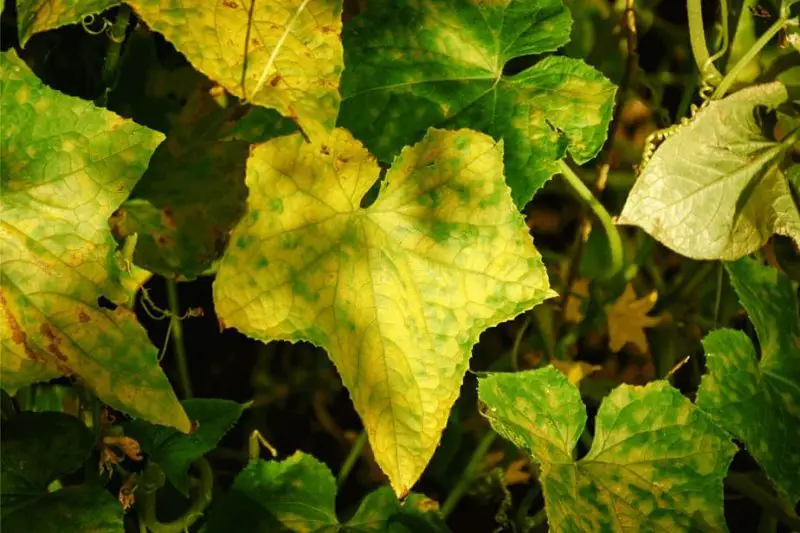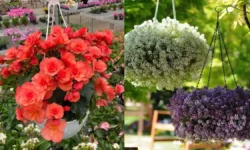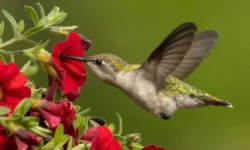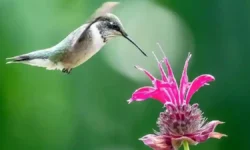Cucumber plants are known for their fast growth and abundant harvest, but yellowing leaves can be a worrying sight for any gardener. Healthy cucumber leaves are bright green, and any discoloration can signal stress or an underlying issue. While a few yellow leaves at the bottom may be natural due to aging, widespread yellowing can affect fruit production and overall plant health. Understanding the causes and how to fix them quickly is essential to keep your cucumber plants thriving.
Yellow leaves can be caused by nutrient deficiencies, improper watering, pest infestations, or diseases. Environmental stress, such as extreme temperatures or poor soil conditions, can also contribute to the problem. The good news is that most causes can be resolved with proper care and timely action. Let’s explore the main reasons behind cucumber plant leaves turning yellow and learn how to fix them effectively.
Table of Contents
Common Causes of Yellow Leaves in Cucumber Plants

Nutrient Deficiencies and Soil Imbalance
One of the most common reasons cucumber leaves turn yellow is a lack of essential nutrients. Cucumbers are heavy feeders and require a balanced supply of nitrogen, magnesium, and potassium. A nitrogen deficiency often leads to older leaves turning pale yellow while new growth remains green. Magnesium deficiency causes yellowing between leaf veins, giving the leaves a mottled appearance. Potassium shortages result in leaf edges becoming yellow or brown and curling upward.
Poor soil pH can worsen nutrient absorption. Cucumber plants prefer slightly acidic to neutral soil, with a pH between 6.0 and 7.0. If the soil is too acidic or too alkaline, nutrients remain unavailable to the plant roots, causing deficiencies even if the soil technically contains the nutrients. Testing your soil regularly ensures your plants get the nutrition they need.
Adding organic compost or well-balanced fertilizers can correct most deficiencies. Fish emulsion or compost tea provides a quick nitrogen boost, while Epsom salt can help with magnesium shortage. For potassium, using organic potash or a cucumber-friendly fertilizer ensures strong growth and vibrant green leaves.
Improper Watering Practices
Watering issues are another major factor that causes cucumber plant leaves to turn yellow. Both overwatering and underwatering stress the plant, leading to discolored leaves. Overwatered cucumbers develop soggy soil conditions, suffocating the roots and promoting root rot. Yellowing in this case is often uniform, starting at the bottom leaves before spreading upward.
Underwatering, on the other hand, causes the leaves to wilt, curl, and eventually turn yellow as the plant conserves moisture. Cucumber plants need consistent soil moisture, especially during flowering and fruiting stages. Sudden drought stress can cause leaf drop and reduce fruit quality.
Maintaining even soil moisture is key to preventing water-related yellowing. Mulching around the base helps retain soil moisture and prevents evaporation. Watering deeply once or twice a week, depending on weather conditions, encourages strong root growth and healthier leaves.
Pest Infestations Damaging the Leaves
Yellow cucumber leaves may also be a result of pest activity. Aphids, whiteflies, spider mites, and cucumber beetles are common culprits that suck sap from the leaves, causing stippling, curling, and eventual yellowing. Heavy infestations may lead to sticky honeydew on leaves, promoting sooty mold growth and further reducing photosynthesis.
Cucumber beetles are particularly dangerous because they can also transmit bacterial wilt, a disease that turns leaves yellow and eventually kills the plant. Inspecting your plants regularly, especially under the leaves, helps catch infestations early.
Introducing beneficial insects such as ladybugs or lacewings can control aphids naturally. Neem oil and insecticidal soaps are effective organic solutions for most pests. For severe infestations, covering young plants with row covers until they are established can reduce pest attacks.
Fungal and Bacterial Diseases
Fungal and bacterial infections are another major cause of yellow leaves on cucumber plants. Downy mildew, powdery mildew, and bacterial wilt are among the most common diseases. Downy mildew causes yellow patches on the upper surface of leaves, while the underside develops gray or purple fuzz. Powdery mildew gives the leaves a white powdery coating, eventually leading to yellowing and leaf drop.
Bacterial wilt, spread by cucumber beetles, causes leaves to yellow rapidly, wilt, and die. Unfortunately, there is no cure for bacterial wilt, and infected plants should be removed immediately to prevent spreading.
Good air circulation, proper spacing, and watering at the base of the plant help prevent fungal infections. Copper-based fungicides or organic sulfur sprays can control mild fungal diseases, but prevention is always better than cure. Choosing disease-resistant cucumber varieties is an excellent long-term strategy.
Environmental Stress and Temperature Fluctuations
Cucumber plants thrive in warm weather, but extreme temperatures can stress them and cause yellowing leaves. Cold temperatures below 55°F (13°C) slow down nutrient uptake, while excessive heat above 90°F (32°C) can cause wilting and chlorosis. Transplant shock or sudden changes in sunlight exposure can also trigger leaf discoloration.
Protecting cucumbers from extreme weather is crucial. During cold nights, using row covers or cloches keeps plants warm, while providing shade during scorching afternoons prevents heat stress. Gradually acclimating seedlings to outdoor conditions before transplanting also reduces transplant shock.
Quick Fixes for Yellowing Cucumber Leaves
Improving Soil Nutrition and Fertilization
Restoring soil fertility is the first step in fixing yellow leaves. A soil test helps identify nutrient deficiencies and pH imbalances. Once you know the problem, amending the soil with appropriate fertilizers ensures plants receive balanced nutrition. Organic compost enriches the soil with slow-release nutrients, while liquid seaweed or fish emulsion provides an immediate boost to stressed plants.
For nitrogen deficiency, applying a cucumber-friendly balanced fertilizer helps restore green, vigorous leaves. Magnesium deficiencies respond well to foliar spraying with diluted Epsom salt, which allows the leaves to absorb nutrients directly. Potassium deficiencies can be corrected with wood ash or potassium sulfate.
Avoid over-fertilization, as too much nitrogen can promote lush foliage but reduce fruiting and increase disease susceptibility. Always follow recommended fertilizer dosages for cucumbers.
Correcting Watering Techniques
Adjusting your watering schedule is crucial for preventing further yellowing. Cucumber plants prefer deep, consistent watering rather than frequent shallow watering. Checking soil moisture before watering helps avoid waterlogging. The soil should feel moist but not soggy.
Drip irrigation or soaker hoses provide steady moisture directly to the roots, reducing the risk of fungal infections. Mulching with straw, shredded leaves, or grass clippings helps maintain even soil moisture and keeps the roots cool in hot weather.
Controlling Pests Effectively
Managing pests promptly prevents further damage and helps yellow leaves recover. Start by inspecting plants regularly, especially on the undersides of leaves. If you notice early infestations, remove affected leaves and wash the plants with a strong spray of water to dislodge pests.
Using neem oil, insecticidal soap, or horticultural oil every seven days controls aphids, mites, and whiteflies effectively. For cucumber beetles, handpicking them early in the morning or using yellow sticky traps helps reduce their population. Encouraging natural predators like ladybugs and lacewings also provides long-term pest control.
Managing Fungal and Bacterial Issues
If fungal infections are the cause of yellowing, removing affected leaves and improving airflow around plants is essential. Watering in the morning allows leaves to dry quickly, reducing fungal spread. Applying organic fungicides such as neem oil, sulfur, or copper sprays helps control early-stage infections.
For bacterial wilt, unfortunately, there is no cure. Affected plants should be removed and destroyed immediately to protect healthy cucumbers. Always sanitize garden tools after handling infected plants to prevent spreading bacteria.
Reducing Environmental Stress
Helping cucumbers cope with environmental stress improves overall plant health. Providing shade cloth during extreme heat protects leaves from sunburn and reduces water loss. During cold spells, row covers or garden tunnels keep the plants warm and encourage healthy leaf growth.
If you recently transplanted cucumbers, give them time to adjust. Keep the soil consistently moist and avoid disturbing the roots to reduce transplant shock. Over time, new healthy leaves should replace the yellowing ones.
Preventing Yellow Leaves in the Future
Choosing the Right Varieties and Healthy Plants
Selecting disease-resistant cucumber varieties is one of the best ways to prevent yellow leaves. Many modern hybrids are bred for resistance to downy mildew, powdery mildew, and bacterial wilt. Starting with healthy seedlings also reduces the risk of early stress and infections.
Buying seedlings from reputable sources or growing them from certified seeds ensures strong, vigorous plants. Avoid using seeds saved from diseased plants, as they may carry pathogens that cause yellowing.
Practicing Good Garden Hygiene
Maintaining good garden hygiene helps keep cucumber leaves healthy and green. Removing weeds around cucumber beds improves airflow and reduces pest and disease habitats. Cleaning up plant debris at the end of the season prevents overwintering pests and fungal spores.
Rotating cucumber crops annually also prevents soil-borne diseases from building up. Avoid planting cucumbers in the same spot for at least two to three years, especially if you previously had disease problems.
Maintaining Proper Spacing and Support
Proper spacing and vertical support keep cucumber plants healthy and reduce yellowing risks. Growing cucumbers on trellises improves air circulation, reduces leaf wetness, and makes it easier to spot pests and diseases early. Adequate spacing between plants allows sunlight to reach all leaves, promoting photosynthesis and preventing nutrient competition.
FAQs About Cucumber Plant Leaves Turning Yellow
Why are my cucumber plant leaves turning yellow?
Cucumber leaves often turn yellow due to nutrient deficiencies, improper watering, pest infestations, or fungal diseases. Identifying the cause early helps restore healthy green growth and ensures better fruit production.
Can yellow cucumber leaves turn green again?
If yellowing is caused by nutrient deficiencies or watering issues, the leaves may regain some color after proper care. However, severely damaged or diseased leaves will not return to green and should be pruned to encourage new growth.
Should I remove yellow leaves from cucumber plants?
Removing yellow leaves is recommended, especially if they are diseased or heavily damaged. Pruning improves air circulation, prevents disease spread, and allows the plant to focus energy on healthy foliage and fruit production.
How do I prevent cucumber plant leaves from turning yellow?
Preventing yellow leaves involves maintaining balanced soil nutrition, consistent watering, and regular pest monitoring. Choosing disease-resistant varieties, providing proper spacing, and practicing crop rotation also reduce the risk of leaf discoloration.
What is the best fertilizer for yellow cucumber leaves?
A balanced cucumber-friendly fertilizer rich in nitrogen, potassium, and magnesium works best for yellow leaves. Organic compost, fish emulsion, or diluted seaweed extract quickly boosts nutrient levels and promotes greener, healthier growth.
Final Thoughts
Cucumber plant leaves turning yellow can be alarming, but understanding the underlying causes and applying the right solutions can quickly restore plant health. Whether the issue is nutrient deficiency, watering problems, pests, or diseases, early intervention is key to preventing severe damage. By maintaining healthy soil, practicing proper watering techniques, and monitoring for pests and diseases, you can keep your cucumber plants lush and productive.
Healthy cucumber plants not only look vibrant but also produce better-quality fruits. With consistent care, preventive measures, and quick action when yellowing appears, your cucumber garden will thrive throughout the growing season.






